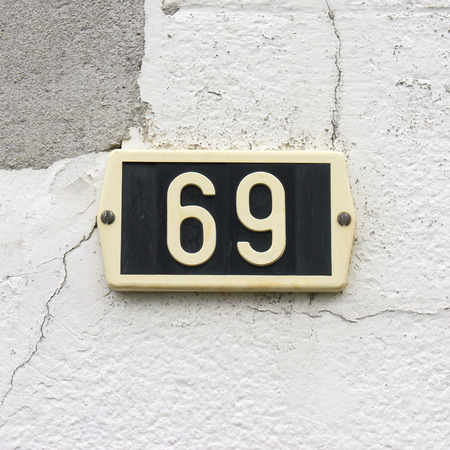1. Introduction to Lucid Dreaming in the British Context
Lucid dreaming, the phenomenon where individuals are aware that they are dreaming and can sometimes exert control over their dreams, has long fascinated cultures worldwide. In Britain, lucid dreaming occupies a unique position shaped by centuries of folklore, scientific inquiry, and evolving societal attitudes. The British cultural lens offers a distinct perspective on this experience, blending traditional beliefs with modern scientific understanding. While lucid dreaming is often seen as a personal curiosity or a tool for self-exploration in many societies, within the British context it is also entwined with historical narratives of dreams as messages, omens, or even sources of creative inspiration. Today, perceptions of lucid dreaming in the UK range from scepticism and intrigue to active exploration through research and popular culture. This article delves into how lucid dreaming is understood, valued, and discussed in British society—tracing its journey from mystical interpretations to its contemporary significance as both a psychological phenomenon and a subject of public interest.
2. Historical Perspectives: From Folklore to Early Science
The British relationship with dreams, and particularly lucid dreaming, is deeply rooted in a complex tapestry of folklore, literary tradition, and the gradual emergence of scientific thought. Historically, dreams were viewed through a mystical lens, often interpreted as omens or messages from beyond. In medieval Britain, stories abounded of prophetic dreams that foretold royal births or impending disasters—an outlook that permeated both oral storytelling and early chronicles.
Folklore and Superstition
British folklore presents a vivid spectrum of dream-related beliefs. For instance, it was widely held that dreaming of certain animals or natural phenomena could predict future events. The concept of ‘second sight’—the ability to perceive future occurrences through dreams—was especially prominent in Celtic regions such as Scotland and Wales. Folkloric figures like the “Night Mare” (from which the term ‘nightmare’ derives) were believed to visit sleepers and induce troubling visions, blending fear with fascination for the unconscious mind.
Dream Interpretations in Early Literature
Literature from the Middle Ages through the Enlightenment reflects changing attitudes towards dreams. Geoffrey Chaucer’s “The Book of the Duchess” and William Shakespeare’s plays frequently use dreams as narrative devices, underscoring their perceived importance in British consciousness. These works oscillate between viewing dreams as divine guidance and mere illusions—a duality that persists even today.
Table 1: Evolution of British Dream Beliefs
| Period | Main Belief | Cultural Context |
|---|---|---|
| Medieval Era | Dreams as Prophecies or Omens | Folklore, religious influence |
| Renaissance | Dreams as Allegory or Artifice | Literature, poetic symbolism |
| 18th-19th Century | Emergence of Rationalism | Early scientific inquiry, skepticism grows |
The Shift Towards Scientific Inquiry
The advent of the Enlightenment marked a pivotal shift in the understanding of dreams in Britain. Thinkers such as Thomas Hobbes began to question supernatural explanations, framing dreams instead as by-products of sensory experience and mental processes. By the 19th century, British scientists like Sir James Paget explored physiological causes for dreaming, laying groundwork for modern sleep research. This transition from myth to science reflected broader societal changes—an increasing desire to demystify the human mind while retaining a distinctive cultural curiosity about what dreams might reveal.
![]()
3. Cultural Attitudes and Social Beliefs
Throughout British history, lucid dreaming has occupied a complex position within the tapestry of cultural attitudes and social beliefs. In medieval England, dream interpretation was often entwined with religious doctrine, where dreams—lucid or otherwise—were sometimes seen as messages from the divine or warnings against sin. The Protestant Reformation in the 16th century shifted perspectives, encouraging scepticism about mystical experiences, including lucid dreams, which were increasingly viewed through a rationalist lens. Among various communities, such as the Celts and later folk traditions in rural Britain, dreams retained a mystical significance; lucid dreams could be interpreted as omens or gateways to ancestral wisdom. Yet, in urban Victorian society, lucid dreaming was more likely dismissed as fanciful or even associated with mental instability.
Religious diversity also shaped attitudes. For example, Catholic communities occasionally integrated lucid dreaming into their spiritual practices through guided meditation and prayer, while other denominations emphasised the dangers of indulging in such experiences. In contrast, some esoteric groups during the late 19th and early 20th centuries, such as the Theosophical Society and certain branches of Freemasonry, embraced lucid dreaming as a path to higher consciousness. These divergent viewpoints illustrate how British social beliefs about lucid dreaming have continually evolved—fluctuating between reverence, suspicion, and scientific curiosity—reflecting broader shifts in societal values across eras.
4. Lucid Dreaming in Contemporary British Society
In the present day, lucid dreaming has found its place within the tapestry of modern British society, reflecting a blend of scientific curiosity, media influence, and evolving cultural attitudes. The British approach to lucid dreaming is nuanced, with perspectives ranging from scepticism to enthusiastic exploration. This section analyses current attitudes, practices, and the role of lucid dreaming in everyday life, as well as its representation in media and academia.
Current Attitudes towards Lucid Dreaming
The British public’s perception of lucid dreaming is shaped by a combination of empirical interest and traditional pragmatism. While some view it as an intriguing psychological phenomenon worthy of study, others consider it a niche or even eccentric pursuit. This diversity of opinion is reflected in survey data and anecdotal accounts:
| Attitude | Description | Prevalence |
|---|---|---|
| Scientific Curiosity | Interest in lucid dreaming as a subject for psychological and neuroscientific research | Growing among students and academics |
| Scepticism | Doubt regarding the authenticity or usefulness of lucid dreaming | Common among older generations |
| Pragmatic Engagement | Use of lucid dreaming techniques for creativity or problem-solving | Increasing among professionals in creative fields |
Practices and Popularity
Lucid dreaming practices in Britain have been influenced by both global trends and local initiatives. Workshops, online forums, and university societies dedicated to dream studies are becoming more prevalent. Books authored by British psychologists and dream researchers further contribute to mainstream acceptance. However, such practices remain somewhat subcultural compared to other wellness trends.
The Role of Media and Popular Culture
The portrayal of lucid dreaming in British media plays a significant role in shaping public perceptions. Documentaries aired on the BBC, features in publications like The Guardian, and segments on radio programmes such as BBC Radio 4’s “All in the Mind” have brought the topic to wider audiences. Meanwhile, references to lucid dreaming appear sporadically in British literature and television dramas, often highlighting its imaginative or therapeutic potential.
Academic Discourse and Research
Britis academic institutions have contributed robustly to the study of lucid dreaming. Research conducted at universities such as Oxford and Swansea investigates not only the mechanisms behind lucid dreams but also their implications for mental health and creativity. Academic journals frequently publish findings that bridge neuroscience, psychology, and cultural studies, reflecting a multidisciplinary approach unique to the UK context.
The Contemporary Role of Lucid Dreaming
Today, lucid dreaming occupies a modest yet meaningful role within modern British culture. It serves as both a subject of personal exploration and an area for scientific investigation. As awareness grows through accessible media coverage and academic engagement, lucid dreaming is likely to become an increasingly recognised aspect of British psychological and cultural life.
5. Impact of British Popular Culture and Media
When examining lucid dreaming through a distinctly British cultural lens, it is essential to consider how popular culture and media have shaped public perceptions and understanding. The exploration of lucid dreaming in British literature, film, television, and wider pop culture reveals not only a fascination with the phenomenon but also the unique ways in which it is represented and woven into national narratives.
Lucid Dreaming in British Literature
British literature has long been a fertile ground for exploring altered states of consciousness, including lucid dreaming. Classic works such as Lewis Carroll’s Alice’s Adventures in Wonderland and George MacDonald’s Phantastes blur the lines between waking life and dream worlds, often using lucid or semi-lucid experiences as narrative devices. More contemporary authors, like Ian McEwan and David Mitchell, have also incorporated themes of self-awareness within dreams to probe questions of identity and reality—a motif that resonates with the British tradition of introspective storytelling.
Cinematic Interpretations: Film and Television
The British film industry has offered its own take on lucid dreaming, often blending psychological intrigue with elements of fantasy or horror. Films such as Papadopoulos & Sons use dream sequences to explore character motivations and subconscious desires, while television series like Doctor Who and Black Mirror occasionally delve into dream manipulation and virtual realities that parallel lucid dreaming experiences. These depictions reflect both scepticism and curiosity—a hallmark of British attitudes towards the mysterious or unexplained.
Pop Culture References and Public Dialogue
Beyond traditional media, lucid dreaming has found a place in British pop culture through music, art installations, and even stand-up comedy. Musicians like Kate Bush have drawn inspiration from dream imagery, while public discussions around sleep health—often broadcast on platforms such as BBC Radio 4—have helped demystify lucid dreaming for general audiences. The accessibility of these conversations reflects a broader British tendency to approach unusual topics with both pragmatism and wit.
Cultural Influence: Shaping Attitudes and Beliefs
The cumulative impact of these cultural expressions is significant. By framing lucid dreaming within familiar narratives—be it through the magical realism of children’s stories or the satirical lens of modern drama—British media has contributed to a nuanced understanding that balances wonder with critical reflection. This interplay between imaginative representation and empirical curiosity continues to shape how lucid dreaming is perceived across generations in Britain.
6. Challenges, Misconceptions, and Emerging Trends
Within the UK, lucid dreaming continues to be a topic that provokes both intrigue and scepticism.
Ongoing Debates: Science vs. Subjectivity
British academia has been a stage for ongoing debates about the scientific legitimacy of lucid dreaming. While some researchers at leading institutions like Oxford and Cambridge have explored its psychological benefits and neurological underpinnings, others remain cautious, questioning the reliability of self-reported experiences and the replicability of studies. This debate reflects a broader British cultural tendency towards empiricism and critical scrutiny, shaping public perceptions and research funding priorities.
Common Misunderstandings
Despite growing awareness, misconceptions about lucid dreaming persist in British society. A notable misunderstanding is the conflation of lucid dreams with supernatural or paranormal phenomena—a view sometimes fuelled by historical associations with spiritualism in Victorian Britain. Additionally, there is confusion regarding the accessibility and safety of lucid dreaming practices; some believe it is an esoteric skill reserved for the few, while others fear potential psychological risks such as sleep disturbances or reality confusion. These misunderstandings are often perpetuated by sensationalised media portrayals and lack of standardised education on the subject.
Emerging Trends in the UK Context
The landscape of lucid dreaming in Britain is evolving alongside shifts in wellness culture and digital connectivity.
Increased Academic Engagement
There is a marked increase in university-led workshops and interdisciplinary research projects exploring lucid dreaming’s potential applications—from creative problem-solving to mental health interventions.
Integration into Mindfulness Practices
British mindfulness practitioners are beginning to incorporate lucid dreaming techniques into broader wellness routines, reflecting an appetite for holistic approaches to mental wellbeing.
Online Communities and Digital Tools
The rise of UK-based online forums, mobile apps, and social media groups dedicated to lucid dreaming has facilitated knowledge sharing across age groups and backgrounds, democratising access to guidance and peer support.
A Forward-Looking Perspective
As misconceptions are gradually addressed through education and open discussion, the British perspective on lucid dreaming is becoming more nuanced—balancing scientific inquiry with respect for individual experience. This evolution points toward a future where lucid dreaming may play a more recognised role within British culture, both as a field of academic study and as a tool for personal growth.


